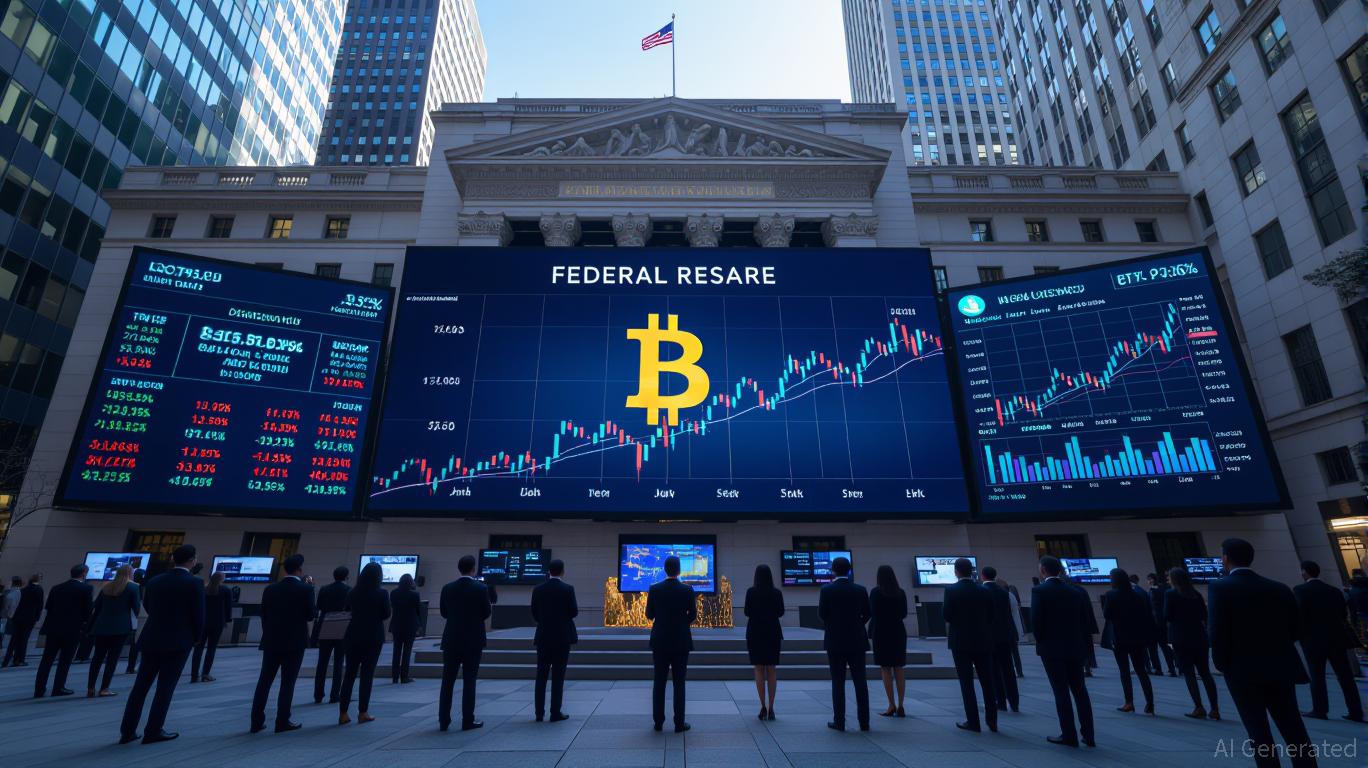ASIC's Approach to Crypto Aims for Equilibrium Amid Calls from Industry for Greater Transparency
- Australia's ASIC classified stablecoins and wrapped tokens as financial products, requiring AFSL licenses for crypto firms under new guidance. - Industry welcomed the move but criticized vague definitions, particularly around DeFi, while draft laws aim for 2026 regulatory compliance deadlines. - The framework includes $16.5M penalties for noncompliance and collaboration with AUSTRAC/APRA to avoid overlaps, targeting global crypto hub status. - With 31% crypto adoption in 2025 and $46T in stablecoin trans
Australia’s financial watchdog has released long-anticipated guidelines for crypto assets, designating stablecoins and wrapped tokens as financial products under current regulations. Industry representatives have generally welcomed the update but are urging for more precise definitions, according to
The revised regulations provide industry-wide “no-action relief” until June 30, 2026, giving companies time to adapt to the licensing rules, as highlighted by TradingView. ASIC also indicated it would allow experienced crypto professionals to serve as responsible managers under AFSL requirements and is offering temporary relief to firms actively pursuing authorization, according to Yahoo’s analysis. However, the regulator did not define “true DeFi,” leaving licensing decisions to depend on each party’s function within decentralized systems, Yahoo further reported.

Most industry participants have responded positively, with OKX Australia CEO Kate Cooper stating the move signals crypto’s growing role in mainstream finance, as reported by Coinpedia. Liam Hennessy, a partner at Thomson Geer, commended the approach for steering clear of both strict European-style rules and the fragmented U.S. model, also according to Coinpedia. Nonetheless, there are ongoing concerns about ambiguous definitions in the proposed legislation. Caroline Bowler, former CEO of BTC Markets, pointed out significant shortcomings, saying, “Structure must come with clarity,” a sentiment Coinpedia captured. The consultation period for the draft rules ended on October 24, and the final regulations are expected by March 2026, Coinpedia noted.
ASIC’s updated guidance also covers stablecoins and tokenized securities, which now fall under Chapter 5C of the Corporations Act, requiring strong custody, risk management, and disclosure standards, as Yahoo reported. The regulator stressed the importance of working with agencies such as AUSTRAC and APRA to prevent overlapping oversight, Yahoo added. Noncompliance could result in penalties of up to A$16.5 million or 10% of annual revenue, highlighting the government’s focus on enforcement, Coinpedia reported.
This regulatory initiative comes as
The proposed regulations and guidance are intended to establish Australia as a leading center for crypto, aiming to balance innovation with consumer safeguards. As the industry develops, clear rules around DeFi, stablecoins, and enforcement will be essential for maintaining confidence and supporting growth.
Disclaimer: The content of this article solely reflects the author's opinion and does not represent the platform in any capacity. This article is not intended to serve as a reference for making investment decisions.
You may also like
Federal Reserve Strategies and Solana’s Price Rally: An Analysis of Macro Influences on Cryptocurrency Markets
- Fed's 2025 rate cut pause and dovish policy injected liquidity, boosting crypto demand including Solana (SOL). - Solana's 3,800+ TPS, $10.3B DeFi TVL, and institutional ETFs ($417M raised) highlight its technical and capital appeal. - Despite 20% price correction, Solana attracted $421M inflows in late 2025, showing institutional demand resilience. - Proposed Fed gold-for-bitcoin policy and Trump-era pro-growth signals amplify crypto's macroeconomic relevance.

Bitcoin’s Price Rally in November 2025: A Turning Point for Institutional Investors?
- Bitcoin's November 2025 surge to $145,000 sparks debate: institutional adoption or speculative frenzy masking structural fragility? - Macroeconomic stability and $72M+ infrastructure investments (e.g., Galaxy Digital in Canaan) signal maturing institutional strategies, contrasting ETF outflows and leveraged liquidations. - Regulatory clarity via U.S. spot Bitcoin ETFs (BlackRock, Fidelity) creates legitimacy but exposes crypto to traditional finance dynamics amid $1B+ ETF outflows. - Anchorage Digital's

DOGE Rises 8.52% Over the Past Week as Whales Sell and ETF Filings Progress
- DOGE surged 8.52% in 7 days amid whale outflows of 3B tokens over 30 days, signaling strategic capital reallocation. - Bitwise's ETF filing for DOGE awaits SEC review within 20 days, potentially catalyzing institutional adoption like 2024 BTC/ETH ETFs. - $0.20 resistance has historically failed to sustain breakouts, with 31 tests showing <52% success rate and -2% 30-day returns. - Traders advised to treat $0.20 as a supply zone, requiring volume spikes or regulatory catalysts for bullish positioning.
ZEC rises 5.96% amid large investor movements and portfolio adjustments
- ZEC surged 5.96% in 24 hours, hitting $631.83, with 44.09% weekly and 1031.31% annual gains. - Whale activity included a $1.25M profit from a 20,800 ZEC long position closed at $585, alongside a new $4.5M leveraged long at $593.17. - Strategic whale positioning and reduced leverage in other positions highlight growing institutional interest and speculative momentum in ZEC.